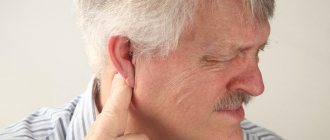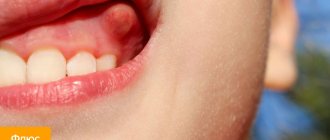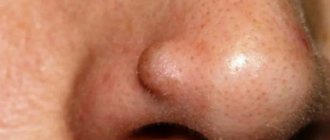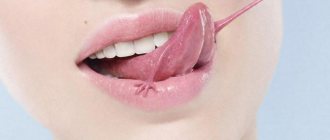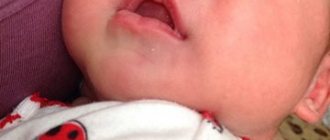Reasons for the formation of bumps behind the ears
There are a number of health problems that can cause lumps and lumps to form behind the ears. It is most likely that this problem may occur with the following diseases:
- mastoiditis;
- otitis media;
- infection;
- abscess;
- lymphadenopathy;
- acne;
- fat cyst.
If you find any suspicious growths, for example, a ball behind the ear, you should immediately consult a doctor. Our clinic specialists are ready to conduct an examination, determine the causes of the disease and prescribe the necessary treatment.
Briefly about diseases
Swollen lymph node of the ears. This phenomenon is called lymphadenopathy. If the process is activated, the gland goes into an inflamed state. This stage of the disease occurs with lymphadenitis.
Swelling of the lymph glands contributes to the accumulation of lymphocytes and phagocytes, which begin to be actively produced by the nodes to fight the disease, since the outflow of lymph has stopped.
Lymphadenitis can be acute, chronic and chronic in an acute form (hyperplastic):
- The acute form is purulent, which can lead to periadenitis, as well as diffuse purulent inflammation. This form of inflammation is called adenophlegmon.
- Chronic are also purulent, but in varying degrees of exacerbation.
- Chronic in its acute form is called hyperplastic due to the fact that exacerbations of inflammation alternate with periods of subsidence.
The lymph node under the ear, in front of the ear, near the ear, near the ear, behind the ear became inflamed. Most often this is a consequence of a blown ear, or an inflamed injured jaw. Possibly a sore throat. In this case, home remedies are usually used. If the inflammation does not decrease and takes a more aggressive form, qualified consultation is required. The reasons may be:
- An infection that occurs in the parotid area or in the body.
- Colds, especially during the autumn-spring period.
- Inflammation of the tooth root (pulpitis).
- Infection caused by piercing an earring.
- Neuritis (inflammation of the auditory nerve).
- Conjunctivitis (eye disease).
- Pneumonia.
- Bronchitis.
Any infectious diseases, any entry of bacteria into the body can cause inflammation of one nearby organ, or all lymph nodes will react with inflammation.
Otitis media
Otitis media is another type of ear infection that can be of either viral or bacterial origin. This disease is characterized by the appearance of a lump behind the ear, which is quite painful and can cause swelling. This disease leads to a tumor noticeable even to the naked eye.
Treatment of such pathologies involves the use of potent antibiotics, which can not only alleviate the symptoms, but also fight the infection. Correct treatment can only be prescribed by an experienced doctor who will conduct a full examination to confirm the diagnosis.
Symptoms of lymphadenitis
At a more advanced stage of the disease, the patient additionally begins to complain of:
- frequent headaches and a sharp deterioration in general health;
- very high fever;
- problems with sleep and appetite;
- stuffiness and pain in the ear.
This pathology is difficult to confuse with other ailments. Self-medication should only be done after visiting a doctor and only if there is no pus coming out of the ear. Otherwise, there is a risk of the situation leading to an abscess. If the inflammation reaches the membrane of the brain, then there is a danger of the most tragic outcome. In addition, the blood flow very quickly begins to spread the infection throughout the body. Against this background, the functionality of the most important systems or organs may be disrupted.
Sometimes an inflamed lymph node behind the ear becomes a consequence of respiratory diseases, otitis media or flu. In this case, it is necessary to cure the primary ailment. After this, the lymph nodes will return to normal on their own. In some cases, you can get by with traditional medicine recipes. However, if we are talking about a more advanced stage, in which pus forms, then most likely the doctor will prescribe a course of antibiotics. Additionally, experts often recommend taking general restorative medications and anti-inflammatory drugs.
It is worth noting that if a child has an inflamed lymph node behind the ear, then there is no need to panic too much. Such ailments are most often diagnosed in children. The main thing is to know how to properly treat this pathology.
Lymphadenopathy
Lymphadenopathy is a secondary infection of the throat or ear that begins its development from the lymph nodes. These organ-like structures are small structures located throughout the human body, including the pelvis, armpits, neck and ears.
With the development of infectious diseases, the lymph nodes will become inflamed, which is the immune system’s reaction to the pathogens. The bumps located behind the ears will gradually increase in size. Therefore, if you suspect lymphadenopathy, you should immediately contact qualified specialists.
Location
The parotid lymph nodes cannot be palpated, as they are located under the skin of the temporal bone. They can only be detected in an inflamed state. There may be 1–4 lymph nodes behind the ear.
In the area around the ears there are two groups: superficial and deep.
- The composition of the superficial group is: 2–3 preauricular anterior auricular (in front of the visor) and posterior auricular (behind the concha) lymph nodes located outside the capsule. In addition, there are another 4–5 nodes near the parotid gland (under the earlobe).
- In the deep group there are 2–3 lymph nodes in the thickness of the gland and 1–2 in the lower part of the gland. There may be lymph nodes in the cheek into which lymph flows from the nose, eyelids, and gums. But they were found only in a small number of people examined.
You can see where the lymph nodes are located behind the ear and under the ears by looking at the diagram.
Lymph nodes in the ear area: 1) preauricular; 2) posterior auricular (behind the ear)); 3) anterior (parotid); 4) under the ear (tonsillar)
Acne
Acne occurs as a result of clogged hair follicles and occurs mainly in teenagers. Once oil and dead skin cells accumulate in the pores, pimples or nodules can form. In some cases, neoplasms can be quite impressive in size, hard in structure, and quite painful.
In our clinic, you can make an appointment with an experienced doctor who will conduct an examination, tell you what to do if there is a lump behind your ear, and, if necessary, prescribe additional examinations.
Treatment
You need to be especially careful with the ear lymph nodes. They are part of the head. Their inflammation, especially purulent, can affect the condition of the entire head and is life-threatening.
If the cause of inflammation is a cold, flu and similar causes, treatment consists of eliminating the cause. The provocateur of inflammation is cured, the swollen gland is healed. It must be remembered that it is impossible to heat inflamed glands.
In acute inflammatory processes, antibiotics and restoratives are required. If the pain is severe, you can use anesthetics and analgesics.
In the case of complicated purulent inflammation, the abscess is opened, and then drug therapy is carried out. Antibiotics are also not ruled out.
Oat milk
To prepare this homemade remedy, you need to buy 1 liter of enough fat milk and prepare a handful of oatmeal. After this, the liquid is brought to a boil and oats are added to it. The heat must be reduced and the medicinal decoction kept on the stove for 35-40 minutes. After this, the liquid cools slightly and is poured into glasses. You can add a spoonful of honey to each of them. Children (depending on age) should be given half or a third of a glass three times a day. For adults, the dose increases.
Prevention of pathology
To avoid inflammation of the lymph node under the ear, be careful about your health:
- carry out timely sanitation of the oral cavity,
- don't get too cold,
- strengthen the immune system,
- take vitamins.
The human lymphatic system needs care and attention no less than any other organ. By taking timely measures to improve its health, you can regain lost health.
I write articles in various areas that, to one degree or another, affect such a disease as edema.
Nettle
A medicinal infusion can be prepared from this herb. To do this, just take a spoonful of dried nettle leaves, chop them and pour 250 ml of boiling water. After this, the liquid is brought to a boil and infused for about 15 minutes. When the infusion has cooled a little, you can strain it and drink half a glass before breakfast, lunch and dinner.
If we are talking about treating a lymph node behind the ear in a child, then the child may not like the rather specific taste of the medicine. To remedy the situation, some add a little natural honey to the liquid. However, doctors do not recommend giving nettle to children. If we are talking about a child, then it is better for him to prepare the following medicine.
Is it dangerous to heat the lymph nodes?
Some traditional medicine recipes involve heating the inflamed area. However, doctors strongly recommend not to carry out such procedures if pus begins to accumulate in the lymph nodes, especially if we are talking about small children. The fact is that warming procedures provoke even greater inflammation. Against this background, the infection begins to spread faster throughout the human body, which is why his condition only worsens. In the most severe cases, blood poisoning occurs.
However, at the initial stage, warming procedures are permitted. Inflamed nodes can be covered with a woolen scarf.
Diagnostics
Laboratory tests will help determine the level of white blood cells in the blood
Lymph nodes in the parotid area and on the face become inflamed for various reasons. Therefore, first of all, it is necessary to find out the true factor that provoked the increase in the formation, which is located next to the ear area. An internist or an infectious disease specialist can examine an inflamed lymph node.
If you complain of pain and enlargement of the parotid lymph node, you should first contact a therapist. He must interview the patient and examine the affected area. Afterwards, if necessary, the therapist refers the person to a highly specialized specialist.
The results of the following diagnostic measures help to understand why the lymph nodes near the ears or near one ear are enlarged:
- Anamnesis collection. The doctor should study the symptoms of the disease in detail. Thanks to this, he will be able to make a diagnosis and exclude similar pathologies.
- External examination of the inflamed lymph node. Palpation is carried out, which allows you to determine the degree of inflammation and the presence of suppuration.
- Lab tests. Blood and urine samples are required. These tests help determine the level of leukocytes in the body and other important indicators.
- Instrumental diagnostics. The patient is given a referral for a fine-needle biopsy and ultrasound examination.
After the doctor receives the test results, he will be able to make a diagnosis for the patient. Based on this, a suitable treatment is selected for a person with an inflamed parotid lymph node.
Celandine
Using this herb you can also prepare medicinal compresses. To do this, you need to collect several tops of celandine, wash and pass through a meat grinder or blender. The resulting slurry is mixed with the same volume of medical alcohol and left in a dark place for 1 hour.
After this, you need to cut off a small piece of gauze, moisten it in hot water and dip it in the prepared infusion. Next, a thin tissue is applied to the affected area, where the greatest inflammation of the lymph node is observed. The top of the gauze is covered with a piece of cellophane and warm woolen cloth. You must walk with the compress for at least five hours. Therefore, it is better to cook it overnight and remove it in the morning.
Advantages of laser removal of atheroma behind the ear:
- Speed (removal is possible on the day of treatment in just 15-20 minutes);
- Atheromas of any size and in any condition can be removed (even festering atheromas can be removed, since the laser has a sterilizing effect on tissue);
- Bloodlessness (the laser seals the vessels that feed atheromas and removal takes place in a dry field);
- Fast recovery;
- Almost complete absence of relapses and complications in the postoperative period.
If you have atheroma, we suggest seeking help from laser medicine specialists at the ATLANTIC Laser Surgery Center.
Aloe
To prepare the medicine, a plant that is at least two years old is suitable. The lower leaves of aloe are used. After grinding, about 150 ml of juice can be squeezed out of them.
The resulting liquid is poured into a glass of natural honey. After this, 2 incomplete glasses of Cahors are added to it. The resulting medicine is infused for 5 days in a dark and fairly cool place. After this time, it is recommended to drink the tincture one tablespoon before meals.
This product is allowed to be given to children, but only over 6 years of age. Do not forget that the drug contains alcohol, so you should exercise caution or avoid such treatment altogether.
